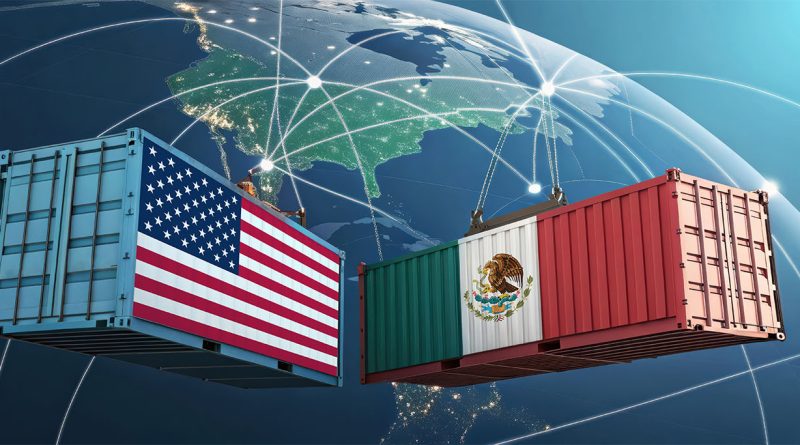Mexico Unveils $1.4 Billion Plan for Strengthening North American Trade
With businesses increasingly relocating manufacturing closer to home, Mexico has introduced Plan México, a $1.4 billion initiative aimed at bolstering regional trade integration and reducing reliance on Asian imports. Launched by President Claudia Sheinbaum, this ambitious program provides financial incentives for companies investing in Mexico’s manufacturing sector. By targeting key industries like semiconductors, electric vehicles, and medical devices, Plan México is designed to attract foreign direct investment and elevate Mexico’s manufacturing capabilities to meet global demands.
What is Plan México, and why does it matter?
Plan México represents a decisive step in strengthening North America’s supply chain resilience. The initiative revolves around offering financial and tax incentives to encourage nearshoring—the practice of relocating production facilities closer to consumer markets.
This $1.4 billion package, equivalent to 30 billion pesos, is divided into two components. Approximately 28.5 billion pesos are earmarked for fixed asset investments, including new machinery and infrastructure upgrades. The remaining 1.5 billion pesos are allocated for workforce training and innovation, focusing on developing skilled labor to support advanced manufacturing.
The program’s goal is to substitute foreign imports with domestically produced goods. For example, Mexico plans to increase the proportion of locally sourced components in manufactured products, including a 15% rise in the domestic content of vehicles by 2030. This emphasis on self-reliance is expected to yield significant economic benefits, with projections indicating GDP growth of 1.2% for Mexico and 0.8% for the United States.
Plan México also aligns with broader geopolitical strategies. As the US and Canada seek to reduce supply chain dependencies in Asia, particularly China, Mexico’s role as a manufacturing hub becomes indispensable.
Breaking down Mexico’s nearshoring incentives
At the heart of Plan México is a suite of financial incentives designed to attract investment in manufacturing and supply chain infrastructure. The program offers two primary benefits: immediate tax deductions on investments in new fixed assets and additional deductions for workforce training expenditures.
The immediate deduction of fixed asset investments is particularly appealing to manufacturers upgrading their production capabilities. For example, businesses in the automotive and semiconductor sectors can use these tax benefits to establish advanced facilities, ensuring competitiveness in the global market.
The workforce training component addresses the need for a skilled labor force. With 1.5 billion pesos dedicated to training and innovation, the government is preparing workers for high-demand skills in robotics, software integration, and sustainable manufacturing. These efforts enhance Mexico’s appeal to foreign investors while boosting the domestic labor force.
Streamlined permit processes for exporters relying on duty-free materials further simplify operations in Mexico. Together, these measures position the country as a hub for high-value manufacturing, reducing logistical complexities and costs for companies in North America.
Industries poised to benefit the most
Plan México targets sectors critical to North America’s economic growth, including semiconductors, automotive manufacturing, medical devices, and agribusiness.
The semiconductor industry, in particular, stands to gain. As demand for semiconductors continues to rise, Mexico’s proximity to the US offers a competitive edge for manufacturers establishing plants closer to key markets. By reducing dependency on Asian imports, this shift addresses global shortages while fostering regional innovation.
The automotive sector, especially in electric vehicle production, is also expected to thrive. The government’s goal of increasing domestic content in vehicles by 2030 aligns with efforts to advance sustainable transportation. Tax incentives and simplified regulations make Mexico an attractive location for automakers expanding their EV production.
Medical device manufacturing is another high-growth area. With global healthcare demands increasing, companies are turning to Mexico for cost-effective production of advanced medical equipment. Meanwhile, agribusinesses are leveraging incentives to modernize operations, ensuring North America remains competitive in global food markets.
Challenges to implementing Plan México
While Plan México presents a bold vision, its success depends on overcoming key challenges. Policy transparency and consistency are vital to ensure the effective use of funds and incentives. Without clear guidelines, allocation risks become inefficient.
Another challenge is balancing investment attraction with long-term goals. Mexico must prioritize high-value industries such as biotechnology and artificial intelligence rather than relying solely on labor-intensive sectors.
Diversification of export markets is equally important. Although the US is Mexico’s largest trading partner, expanding trade relationships with Europe, Asia, and South America could mitigate risks associated with economic downturns or political tensions.
Infrastructure remains an area for improvement. Outdated transportation networks and inconsistent energy supplies could hinder efficiency. Investing in modernizing these systems, especially in energy and ports, is crucial for sustaining growth.
Plan México is part of a larger effort to reshape global supply chains. As businesses reduce reliance on Asia, Mexico’s location and incentives position it as a key player in North American trade.
The geopolitical impact of this shift is significant. Reducing dependence on Chinese imports strengthens the region’s economic resilience and protects critical industries like semiconductors and EVs. Mexico’s integration bolsters the competitiveness of North America as a whole.
Beyond regional benefits, the program’s focus on sustainable and advanced manufacturing aligns with global efforts to combat climate change. Strengthened trade ties under agreements like the USMCA also foster political collaboration, positioning North America as a unified economic bloc.
Sources:
To keep up-to-date with our latest supply chain news, subscribe to our newsletter today.
